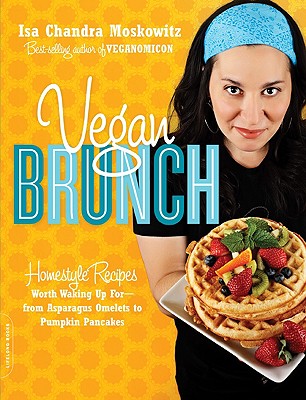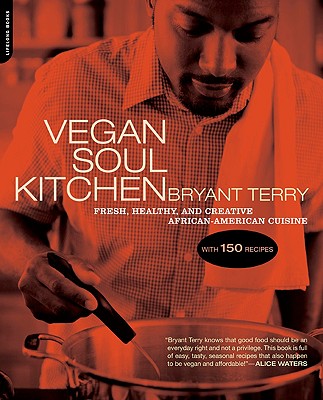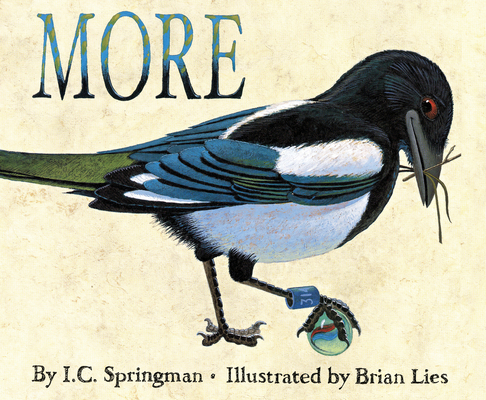Target Audience: Food lovers and cooking enthusiasts. This would also work for someone who likes to read about cultural history and the history of everyday objects (see also: Brilliant by Jane Brox).
I love cookbooks, but I don't think about the ingredients as something that just magically appear in my kitchen. I go to great lengths to know where my food comes from, who grew it, what went into producing it, and the kind of nourishment it provides. It's no secret that I love reading about food, but before reading Consider The Fork, I never really put much thought into my kitchen tools. What of the vegetable peeler (which I don't own)? Or the wooden spoon (also don't own)? Or the ever-obvious knife (own many)? Wilson's detailed research changes the way we view all of those items we take for granted. After all, my great-great-great Italian grandmother didn't make her famous pesto in an electric food processor, but I'm not about to give mine up for the job.
Consider the Fork tells the deliciously fascinating history of cooking and culinary tools. From knives to coffee grinders to the kitchen fire itself, readers will relish every moment. Just how long did it take us to invent the vegetable peeler? How different are our whisks from the whisks of the Middle Ages? Consider the Fork takes the reader through the history of how we slice, cook, measure, grind, and mold our food.
The book starts out with the obvious beginning: pots and pans. Wilson explains that hundreds of years of cooking has yet to produce a material that will create a pan that will heat evenly, has non-stick qualities, is cost effective, won’t poison the eater, and is also durable. After years of trials and testing, an engineer named Chuck Lemme decided that cast iron rates highest among all available materials. Since I already have cast iron pans, this is the only chapter that doesn't make me immediately want to go out and buy things for my kitchen. Much.
Consider the Fork runs the risk of costing a small fortune for kitchen worshipers, such as myself. The chapter on knives had me all excited to buy a mezzaluna and a santoku, until I realized that the kitchen knife I use everyday is based on a santoku. The chapter on measuring has me convinced that I need to get digital kitchen scales and that it will solve all of my failures with baking.
The final chapter gives the history and origins of the modern kitchen. The kitchen as we know it did not exist until fairly recently. Before electricity, food was stored in cooler rooms away from the blazing heat of the cooking fire. Not until the fire was contained and the ice box was introduced, did food preparation and storage begin to take place in the same room as the cooking. It's odd to think that the room I consider to be the heart of my home would have been a strange sight just a century ago. Our modern obsession with the perfect kitchen is only possible because of the rich history of food preparation.
As a little bonus, each chapter is paired with an appliance that relates to it. These little sub-chapters are only about a page long and give an abbreviated history of a relevant kitchen tool. The pots and pans chapter ends with rice cookers and the measurement chapter ends with an egg timer. These little sections break up the book and give the reader a fun little history of some of our favorite kitchen objects.
Consider the Fork is also peppered with little illustrations of the tools that Bee refers to. I'm not always a fan of these kinds of pictures in books, because they can break up the text in weird ways and seem unnecessary. That being said, they are wonderful in this book. Annabel Lee depicts the implements Wilson refers to most often, which is necessary when trying to explain the subtle differences between certain kinds of knives and eggbeaters that the reader may have never heard of. Her pictures are simple and not at all distracting, all while capturing the personality of the book perfectly.
I will be bending over backwards to recommend this book to customers all holiday season. It is a must-have for any foodie or cooking enthusiast to savor. It's completely unique and it just came out, so you can be sure the recipient doesn't already own it, but will treasure it immediately as a delightful and juicy account of our kitchens.
Buy it indie!
Monday, November 19, 2012
Monday, November 12, 2012
One Hit Cookbook Wonders
 Every now and again, while at work, I'll come across a customer sitting in the cookbook section copying down a recipe from one of our books. Some may take issue with that, but I've never really seen the harm in it. Who wants to buy a cookbook for just one recipe anyway? Oh wait, I would.
Every now and again, while at work, I'll come across a customer sitting in the cookbook section copying down a recipe from one of our books. Some may take issue with that, but I've never really seen the harm in it. Who wants to buy a cookbook for just one recipe anyway? Oh wait, I would.I've got tons of cookbooks and I'm constantly talking myself out of buying more. I don't even use cookbooks for 95% of my cooking, but I love the inspiration. I'd be lost without baking books, because although I can make a yummy dinner from a seemingly empty fridge, I can't bake to save my life. The thing about having the whole book, is that if you know one recipe is good, chances are, you'll like most of the others as well.
I've got several cookbooks that I bought, mostly because I love one specific recipe. Vegan Brunch is the biggest offender; I use the Perfect Pancake recipe every week for Pancake Saturdays, a weekly tradition in my home. After purchasing it, I discovered other fantastic recipes in there like English muffins, cocoa raspberry muffins, and Tofu Omelets (trust me) , but oh, man those pancakes turn out perfectly every time. You don't even need any fancy vegan things. I often substitute water for non-dairy milk and you'd never know the difference.
 Vegan Soul Kitchen is another one. Well, actually, I use two recipes from that one with regularity. The coconut oil pie crust will come out perfectly no matter what and without tears. My co-workers don't believe me, but I copied down the recipe for some of them, so someday maybe they'll get over the fear of "strange vegan ingredients" and try it out. Truth be told, there are no "strange vegan ingredients" in anything I cook, but I guess even coconut oil is not a regular occurrence in non-vegan pantries. The other favorite from this book is the red rice. Bryant Terry does the most amazing and tasty things with rice, that I would never have thought of on my own. His book can be loved by vegans and non-vegans alike for his whole-food ingredients and his talent for re-thinking the mundane (like rice).
Vegan Soul Kitchen is another one. Well, actually, I use two recipes from that one with regularity. The coconut oil pie crust will come out perfectly no matter what and without tears. My co-workers don't believe me, but I copied down the recipe for some of them, so someday maybe they'll get over the fear of "strange vegan ingredients" and try it out. Truth be told, there are no "strange vegan ingredients" in anything I cook, but I guess even coconut oil is not a regular occurrence in non-vegan pantries. The other favorite from this book is the red rice. Bryant Terry does the most amazing and tasty things with rice, that I would never have thought of on my own. His book can be loved by vegans and non-vegans alike for his whole-food ingredients and his talent for re-thinking the mundane (like rice).Jo Stepanik's The Uncheese Cookbook is a staple in my kitchen. I originally bought it years ago to help a non-vegan boyfriend come to terms with the loss of cheese whenever I cooked. I don't usually use vegan substitutes for animal products, because they're weird and icky. These are homemade sauces, dips, and blocks that are 100% all natural, because they are home made. You won't find any wacky, hard-to-pronounce ingredients in this book. Best of all, everything in the book can be ready to eat in a pinch. My favorite is the Gooey Grilled Cheese Sandwich or the Macaroni and Cheese Sauce. But the recipe I use most often is actually not a cheese alternative at all, since I still tend to make those only by request of dinner guests, but a pizza dough recipe. The book naturally falls open to that page when I pull it out monthly to make a yummy vegetable pizza.
I'm guilty of writing down recipes from a book I didn't think I'd want later, but my shelves then become cluttered with bits and scraps of paper, and I know I'll never find that awesome recipe for Mexican Chocolate Cupcakes again because I think my cat probably chewed it up while trying to get my attention. And if I can find the recipe again, I won't know what book it came from and which author to trust with my cupcake needs, because I wasn't smart enough to write that information down. I better stop now, because I've made myself hungry. So if you're in the market for a new cookbook, or a new recipe, you could get out a pen and paper in your local bookstore, but you might be missing out on so many other fantastic recipes that you might have found if you brought the book home.
Monday, November 5, 2012
More By I. C. Springman, Illustrated by Brian Lies
Target Audience: The child of a book lover, especially, or any kid, age 1-7ish.
This is one of the best children's books to come out this year. There are other great kid's books (which I'll try to get up before the holidays), but none that I love so much as this one.
The story is about a magpie that, in the beginning, has nothing. Its mouse friend gives it a marble and it understands what it means to have something. Suddenly the magpie wants more. Just a little more. Then a lot more. And then way, way too much. Luckily the mouse is still there to help. It's a valuable lesson in a culture where your life's value can seemingly be measured by how much you own, rather than how much you really need.
One of the things I love about this book, is how few words it has. Most of the story telling is inferred with pictures and left to the imagination. That paragraph above has more words than the whole book, so it's great for the very little ones, and those just learning to read. These factors will allow the book to grow with the child. Kids at different points in their life will get different things from the book, so it's not like a board book that you read to a toddler a few times and then may end up throwing away when the child outgrows it.
The pages are full of all of the things the magpie has collected, like marbles, string, coins, stamps, toys, everything. There's even a Pink Floyd cassette tape, which is obviously there for the adult reading the book, because the current generation has never seen or heard of a cassette tape (I know this because when I told a girl the only audio book available for the book she wanted as on cassette tape, she had no idea what I was talking about, which lead her mother and I to exchange a "kids these days" look). Having all of these items adds another layer to the interactivity of reading to a child. Even if the child can't read, perhaps she can count the marbles? Maybe he can find all of the purple things? What kind of coin is that? Where do you think that Lego brick came from? Someone I sold it to planned to use it with kids with learning disabilities, which again, illustrates its versatility.
You can't talk about a kid's book without also talking about the art. It is fantastic. To me, a children's book is just as much art, as it is story, so even if the story is great, the art has got to support it. Because the art does most of the story-telling in this book, there's even more pressure for it to be great, and illustrator Brian Lies lives up to my completely objective and outrageously-high standards.
I could never recommend a children's book if I didn't think it would be cherished forever, and perhaps saved for future children. After all, I still own my favorite childhood books.
Buy it indie!
This is one of the best children's books to come out this year. There are other great kid's books (which I'll try to get up before the holidays), but none that I love so much as this one.
The story is about a magpie that, in the beginning, has nothing. Its mouse friend gives it a marble and it understands what it means to have something. Suddenly the magpie wants more. Just a little more. Then a lot more. And then way, way too much. Luckily the mouse is still there to help. It's a valuable lesson in a culture where your life's value can seemingly be measured by how much you own, rather than how much you really need.
One of the things I love about this book, is how few words it has. Most of the story telling is inferred with pictures and left to the imagination. That paragraph above has more words than the whole book, so it's great for the very little ones, and those just learning to read. These factors will allow the book to grow with the child. Kids at different points in their life will get different things from the book, so it's not like a board book that you read to a toddler a few times and then may end up throwing away when the child outgrows it.
The pages are full of all of the things the magpie has collected, like marbles, string, coins, stamps, toys, everything. There's even a Pink Floyd cassette tape, which is obviously there for the adult reading the book, because the current generation has never seen or heard of a cassette tape (I know this because when I told a girl the only audio book available for the book she wanted as on cassette tape, she had no idea what I was talking about, which lead her mother and I to exchange a "kids these days" look). Having all of these items adds another layer to the interactivity of reading to a child. Even if the child can't read, perhaps she can count the marbles? Maybe he can find all of the purple things? What kind of coin is that? Where do you think that Lego brick came from? Someone I sold it to planned to use it with kids with learning disabilities, which again, illustrates its versatility.
You can't talk about a kid's book without also talking about the art. It is fantastic. To me, a children's book is just as much art, as it is story, so even if the story is great, the art has got to support it. Because the art does most of the story-telling in this book, there's even more pressure for it to be great, and illustrator Brian Lies lives up to my completely objective and outrageously-high standards.
I could never recommend a children's book if I didn't think it would be cherished forever, and perhaps saved for future children. After all, I still own my favorite childhood books.
Buy it indie!
Subscribe to:
Posts (Atom)

